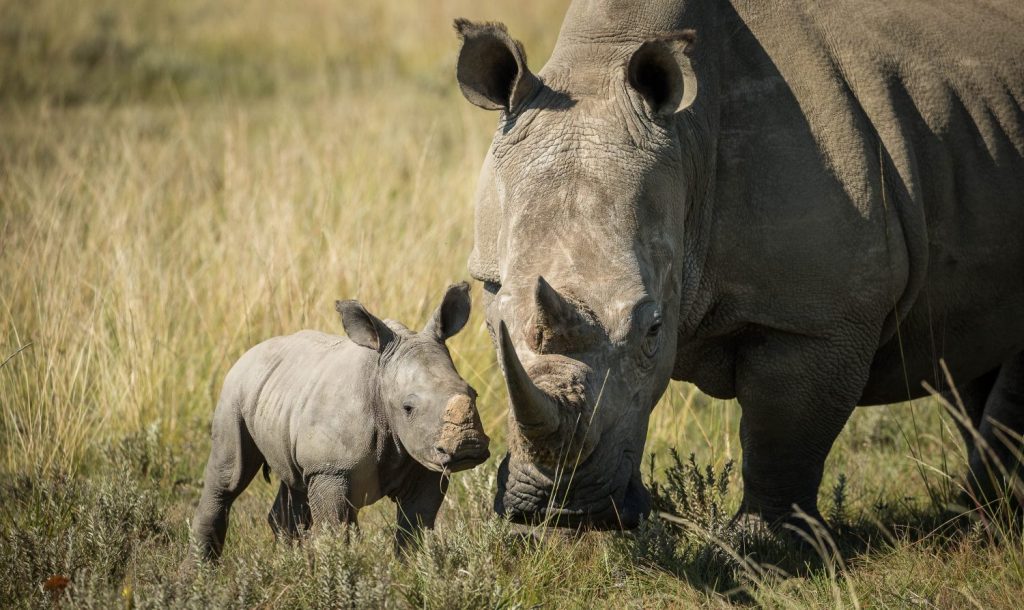The Rhino Poaching Crisis

WELCOME TO KWAZULU-NATAL: PROUD HOME OF THE SOUTHERN WHITE RHINO
Where and how it started
Fuelled by a growing demand for rhino horn in primarily China and Vietnam and driven by international criminal syndicates, rhinos around the world are under threat of extinction. During 2012, both the Western black rhino and Vietnamese population of Javan rhino were declared extinct and there are now only two Northern White rhinos left living under 24/7 protection in Kenya, both of which are female.
South Africa is now one of the last remaining strongholds for wild rhino populations – one of the key reasons the country bears the brunt of what is widely regarded as one of the worst global wildlife conservation crises in the past century.
Since the escalation of the rhino poaching crisis in 2011, more than 10,000 rhinos have been killed within South Africa’s borders. The worst year on record was 2014, when approximately 1,215 rhinos were lost—equating to one rhino killed every eight hours. Kruger National Park, once home to the largest rhino population, experienced a devastating 60% decline in rhino numbers.
From 2021 to the present, poaching levels have remained alarmingly high, with between 400 and 500 rhinos killed each year. The province of KwaZulu-Natal has become a key poaching hotspot, accounting for nearly half of all rhino losses between 2021 and 2023.
If current trends continue, we risk the complete disappearance of rhinos from major national parks, with only small populations surviving in intensively protected areas. Recovery could take decades – if it remains possible at all.
This is why sustained support for organisations working to protect rhinos is not just important- it is urgently critical.
Over 70% of the world’s white rhinos as well as a significant population of critically endangered black rhinos live within South Africa. Rhinos are “Big Five” animals, with wildlife tourism supporting thousands of jobs and local businesses. In many South African communities, rhinos are part of the natural and cultural heritage. They feature in traditional stories, conservation symbols, and community-based tourism.
Rhino Conservation in KwaZulu-Natal
KwaZulu-Natal is renowned for bringing the Southern white rhino back from the brink of extinction. Thought to be extinct, around 40 Southern white rhinos were unexpectedly discovered in northern KZN (Zululand) in 1894. The finding of these last survivors of a once-prolific species led to the proclamation of the now world-famous iMfolozi Game Reserve, which was once the tightly-controlled Royal Hunting Grounds of King Shaka Zulu. By the 1960’s, white rhino numbers had increased to 600 and so began Operation Rhino and the return of Southern white rhino into habitats across Africa – including the Kruger National Park – and to wildlife parks in Britain, USA and Europe. Today, KwaZulu-Natal is proudly known as the home of the Southern white rhino.
It is thanks to KZN’s rhino conservation pioneers, such as the late Dr Ian Player, Magqubu Ntombela and others that by 2010, Southern white rhinos around the world numbered 22,000: the greatest rhino conservation success story ever. But now sadly, it is one that is dangerously close to being unravelled as more and more rhinos are falling victim to poachers’ guns.
This province has a proud history of saving the rhino: We did it once and we need to fight to do it again. It is an international wildlife crisis that needs us to all work together to save a species that has been with us for more than 50 million years.
Thank you for taking time to find out more about Project Rhino’s work to safeguard the rhinos of KwaZulu-Natal – one of the most historic and beautiful conservation regions in the world – and appreciating for yourself, the challenges we are facing.
